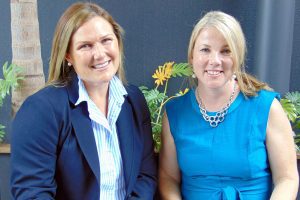Frighteningly, the incidence of skin cancer in Australia is the highest in the world and according to Cancer Council Australia two in three Australians will be diagnosed with skin cancer by the time they are 70. It’s time to take action, not be a statistic!
Despite being bombarded with educational and media campaigns, Australians are not getting the message – the rate of skin cancer has risen in Australia over the past decade and it now accounts for around 80 per cent of all newly diagnosed cancers.
It doesn’t mean we need to stop enjoying the most of summer and there really are no secrets to being able to do so. The best chance you have to avoid skin cancer is to protect and understand your skin. Information and advice is readily available from organisations such as Cancer Council Australia and the Skin and Cancer Foundation, your local GP, local pharmacist, and dermatologists and skin specialists. All will confirm early detection is the best chance you have of avoiding being another skin cancer statistic.
What to look for
There are three main types of skin cancer to look for.
Non-melanoma skin cancers are the most common cancers in Australia, and most are not life-threatening. Interestingly, they are more common in men, with almost double the incidence compared to women. The two main types are basal cell carcinoma and squamous cell carcinoma. A third group of lesions called keratinocyte dysplasias includes solar keratosis, Bowenoid keratosis and squamous cell carcinoma in-situ (Bowen’s disease). These are not invasive cancers, however if they are not treated, some may develop into non-melanoma skin cancers.
Melanoma, the most dangerous form of skin cancer, is the third most common cancer in both Australian women and men. More than 11,500 people in Australia were diagnosed with melanoma and in 2011 and more than 2000 people died from skin cancer in the same year. The good news is, once detected and treated, the five-year relative survival rate for melanoma is 90 per cent for Australian men and 94 per cent for Australian women.
Early Detection
The sooner a skin cancer is identified and treated, the better your chance of avoiding surgery or, in the case of a serious melanoma or other skin cancer, potential disfigurement or even death.
Because skin cancers rarely hurt, they are more often seen than felt so it’s wise to develop a regular habit of checking your skin for new spots as well as changes to existing freckles or moles.
The Cancer Council’s advice is to completely undress and ensure you have good light and a mirror, to check hard-to-see places. Skin cancers are known to occur in places not exposed to the sun, such as soles of the feet, between digits and under your arms. Even your buttocks, which probably never sees the light of day, is not immune to skin cancer.
Get a family member, partner or friend to help check, and don’t forget to look in your scalp.
Once you get to know your skin and what’s normal for you, you will easily notice any changes. As soon as you see anything you don’t think looks normal, make an appointment to see your doctor.
The most important thing you should do is talk to your doctor about your level of risk and gather advice on early detection. Make a regular date in your diary for a check, and you will put your mind at ease and give your skin and body the best chance of beating the ravages of the sun.
Protection
If you haven’t come across the hugely prevalent campaign of Slip, Slop, Slap, Seek and Slide, then you are living under a rock. And if you are, then at least you are out of the sun.
The campaign is Simple
Slip Slip on some sun-protective clothing – cover as much skin as possible
Slop Slop on broad spectrum, water resistant sunscreen which is at least SPF30+. There are products available in Australia now that are SPF50+. While SPF50+ sounds impressive, it only offers marginally better protection. SPF50+ filters out 98 per cent of UVB radiation compared to 96.7 per cent blocked by SPF30+, so it doesn’t mean you can apply less often or spend longer periods in the sun. Sunscreen should be applied 20 minutes before you go outdoors and every two hours afterwards.
Slap Slap on a hat – make sure it protects your face, head, neck and ears
Seek Seek shade
Slide Slide on some sunglasses – make sure they meet Australian Standards. And, of course, it’s extra smart to be more cautious in the middle of the day when UV levels are most intense.
It’s as Simple as ABCD
The Cancer Council’s ABCD melanoma detection guide is an easy-to-remember system for checking your skin. Below is the ABCD melanoma detection guide.
 A is for Asymmetry –
A is for Asymmetry –
Look for spots that lack symmetry. That is, if a line was drawn through the middle, the two sides would not match up.
B is for Border –
A spot with a spreading or irregular edge (notched).
C is for Colour –
Blotchy spots with a number of colours such as black, blue, red, white and/or grey.
D is for Diameter –
Look for spots that are getting bigger.
| More InformationFor information and advice on skin cancer, contact Cancer Council Australia on 13 11 20 or www.cancer.org.au Skin and Cancer Foundation www.skincancer.asn.au |




















Add Comment